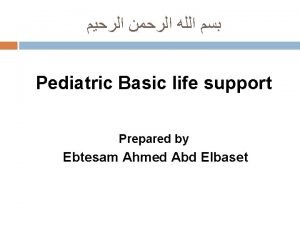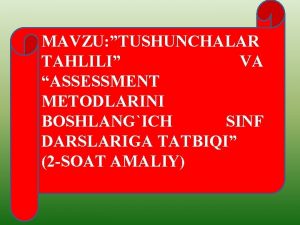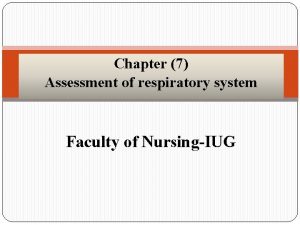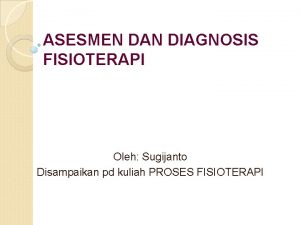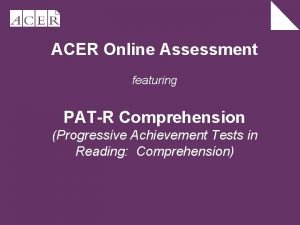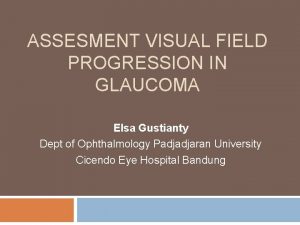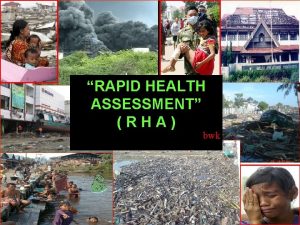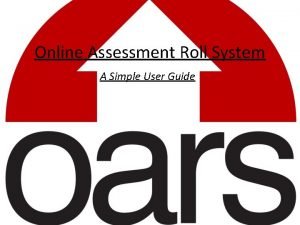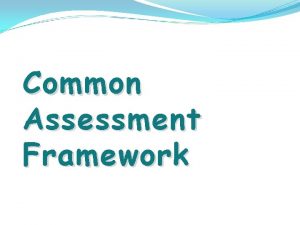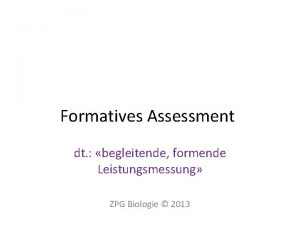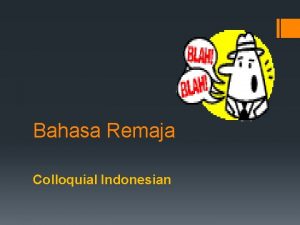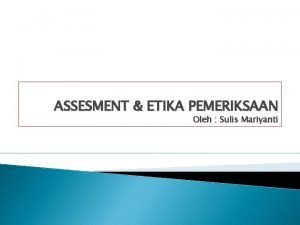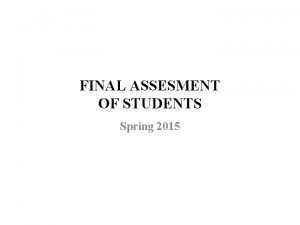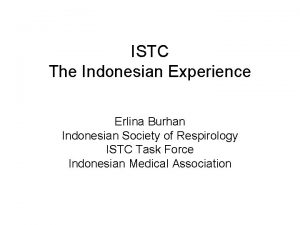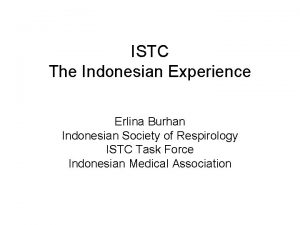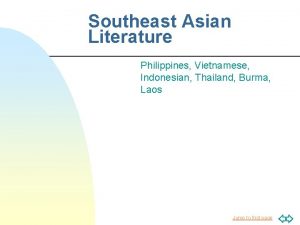Literature Study on the Indonesian National Assesment for


![Indonesia Demographics Profile 2014 [1] Population : 253, 609, 643 (July 2014 est. ) Indonesia Demographics Profile 2014 [1] Population : 253, 609, 643 (July 2014 est. )](https://slidetodoc.com/presentation_image_h/0a08926f2ea53aadbe9e59bc89b25a2a/image-3.jpg)
![Primary school participation [2] 2009 -2012; Net enrolment ratio (%): 95 male, 96 female Primary school participation [2] 2009 -2012; Net enrolment ratio (%): 95 male, 96 female](https://slidetodoc.com/presentation_image_h/0a08926f2ea53aadbe9e59bc89b25a2a/image-4.jpg)













- Slides: 17

Literature Study on the Indonesian National Assesment for High School Students NOVRIANA SUMARTI, Ph. D. Faculty of Mathematics and Natural Sciences Institut Teknologi Bandung- Indonesia

Introduction Indonesia : between Indian Ocean and Pacific Ocean 5, 120 kilometres from east to west, 1, 760 km from north to south http: //www. thepersecution. org/world/indonesia/08/06/fsm 13. html
![Indonesia Demographics Profile 2014 1 Population 253 609 643 July 2014 est Indonesia Demographics Profile 2014 [1] Population : 253, 609, 643 (July 2014 est. )](https://slidetodoc.com/presentation_image_h/0a08926f2ea53aadbe9e59bc89b25a2a/image-3.jpg)
Indonesia Demographics Profile 2014 [1] Population : 253, 609, 643 (July 2014 est. ) the fourth largest country on earth (after China, India, and the United States). Age structure: 0 -14 years: 26. 2% (male 33, 854, 520/female 32, 648, 568) 15 -24 years: 17. 1% (male 22, 067, 716/female 21, 291, 548) 25 -54 years: 42. 3% (male 54, 500, 650/female 52, 723, 359) 55 -64 years: 7. 9% (male 9, 257, 637/female 10, 780, 724) 65 years and over: 6. 5% (male 7, 176, 865/female 9, 308, 056) Population growth rate: 0. 95% School life expectancy (primary to tertiary education) : 13 years
![Primary school participation 2 2009 2012 Net enrolment ratio 95 male 96 female Primary school participation [2] 2009 -2012; Net enrolment ratio (%): 95 male, 96 female](https://slidetodoc.com/presentation_image_h/0a08926f2ea53aadbe9e59bc89b25a2a/image-4.jpg)
Primary school participation [2] 2009 -2012; Net enrolment ratio (%): 95 male, 96 female Net attendance ratio (%): 94 male, 95 female Out-of-school children of primary school age: 5 % Survival rate to last primary grade: 89% Secondary school participant [2] 2009 -2013: Net enrolment ratio (%): 75 male, 77 female Net attendance ratio (%): 56 male, 54 female Participants of National assessment for higher school students 2013 : 1, 581, 286 students Passing rate : 99. 48%

How to standardize the quality of the education, especially for the secondary level. There are pros and cons on using the result of the national assessment to be set as the passing criteria for a student’s graduating. The pro stated three reasons 1. Need to measure of the quality of education across the region 2. Use UN as a national standardization of education quality, and 3. It can motivate the students, parents, teachers, and stakeholders to enhance the learning achievement of students based on the national standards.

The cons stated : 1. the results of the National Exam should be used only as an evaluation tool rather than as the decision to pass or fail to graduate. 2. The access to standard education facilities are still not well distributed. There are big gap between the public school facilities in Java island ones in other islands. This becomes the reason of unfaireness on evaluating the same standard in all schools.

History of National Assessment for higher school students in Indonesia 1950 – 1960: by the Department of Education and Culture. 1965 – 1971: The problem set and scedules were still determined by the government. 1972 – 1979: the government gave the freedom to any school or group of schools in setting the questions and conducting the exam. The govenment only gave general guidelines. 1980 – 2014: the problem set were determined by the government for all schools for standarditation. The passing criteria was determined by a combination of both results and reguler test results in the class.

Aspects of the National Assessment: 1. 2. 3. 4. Distribution of results based on 2013 National Exam Uniformity of difficulty level in the sets of test problems Portions of the basic competencies in the national exam Reasoning as the cognitive demand

Distribution of the results based on 2013 National Exam Classification Subject Average Lowest Score Highest Score Standard Deviation Natural Sciences All Subjects 39. 76 3. 75 59. 20 7. 36 Maths 6. 07 0. 75 10. 00 1. 82 Social Sciences All Subjects 36. 60 3. 25 56. 45 7. 16 Maths 5. 97 0. 75 10. 00 1. 96 Language All Subjects 38. 23 19. 80 56. 30 6. 97 Maths 5. 26 2. 00 10. 00 1. 80 All Subjects 40. 21 7. 80 56. 60 6. 44 Maths 5. 88 2. 50 10. 00 1. 91 Religion

Competencies 1 2 3 4 5 6 National 66. 07 66. 17 52. 82 51. 08 56. 42 52. 55 East Java 81. 99 82. 90 72. 11 74. 45 69. 06 North Maluku 42. 03 46. 13 40. 96 40. 37 40. 50 33. 84

Uniformity of difficulty level in the sets of test problems There were 20 (twenty) packages of variation sets There were 5 (five) different sets distributed in a single exam room. A research [4] were conducted to determine the level of difficulty based on data from the successfulness of students to answer for 2013 exam in Yogyakarta. Using assumption that the data was normally distributed and homogeneous, ANOVA statistical test showed : B 01 package is different from the level of difficulty in the package B 03 -B 12, B 14 -B 20, B 01 package is equivalent to B 02 and B 13 packages.

Portions of the basic competencies in the national exam No 1 2 3 4 5 6 Content Algebra Statictics and Probability Calculus Geometry Logic Trigonometry Total 2008 Curriculum 30 6 2010 13 3 2011 16 3 11 9 4 3 63 7 5 1 2 31 7 5 1 2 34 Based on [5], about 50% included in the national exam

Reasoning as the cognitive demand No Cognitive demands 1 Knowing 2 Applying 3 Reasoning 2008 Curriculum 66. 25% 27. 5 % 6. 25 % 2010 Nat Exam 2011 Nat exam 72% 23 % 5% 60 % 32 % 8% Based on [5], Emphasize only on the knowing and applying aspects. The national exams focused only in the calculation of the standard formulas. There was no question that requires students to think extra by combining several concepts.

Conclusions 1. Distribution of results based on 2013 National Exam shows there is a gap between the highest and the lowest scores. 2. The government to do good planning on the problems with the same level of difficulty for all packages in the future. 3. the basic competencies containing in 2010 and 2011 National Exam papers had not yet fulfilled the total requirement of the basic competencies in 2008 curriculum. There were only about 50% included in the national exam. 4. Reasoning in mathematics can be regarded as mathematical thinking pattern. The 2008 National Curriculum and the National Exam papers contained mainly problem set on knowing and applying aspects, not reasoning, on cognitive demand.

References: 1. http: //www. indexmundi. com/indonesia/demographics_profile. html 2. The State of the World's Children Report 2015 Statistical http: //www. data. unicef. org/resources/the-state-of-the-world-s-children-report-2015 -statisticaltables#sthash. ue. St 88 Tm. dpuf 3. W. A. H. Sipayung (2013). Dampak Ujian Nasional (UN) Terhadap Pelajar SMAN di Kota Medan dengan Menggunakan Analisis Faktor, SKRIPSI, 080803027, Departemen Matematika, Fakultas Matematika Dan Ilmu Pengetahuan Alam, Universitas Sumatera Utara, Medan. 4. A. D. S. Suky (2014). Analisis perbedaan tingkat kesulitan 20 paket ujian nasional soal matematika tingkat SMA/MA jurusan IPA tahun 2013, Skripsi, UIN Sunan Ampel Surabaya, FITK, Jurusan MIPA, Prodi Pendidikan Matematika. 5. D. Amelia, B. Murtiyasa, Masduki (2012). Pemetaan Soal-Soal Ujian Nasional Matematika SMA/MA (Analisis isi dan aspek kognitif) , Seminar Nasional Pendidikan Matematika , Surakarta, 09 Mei 2012.

Pre-primary school gross enrolment ratio – Number of children enrolled in pre-primary school, regardless of age, expressed as a percentage of the total number of children of official pre-primary school age. Primary school gross enrolment ratio – Number of children enrolled in primary school, regardless of age, expressed as a percentage of the total number of children of official primary school age. Primary school net enrolment ratio – Number of children enrolled in primary or secondary school who are of official primary school age, expressed as a percentage of the total number of children of official primary school age. Because of the inclusion of primary-school-aged children enrolled in secondary school, this indicator can also be referred to as a primary adjusted net enrolment ratio. Primary school net attendance ratio – Number of children attending primary or secondary school who are of official primary school age, expressed as a percentage of the total number of children of official primary school age. Because of the inclusion of primary-school-aged children attending secondary school, this indicator can also be referred to as a primary adjusted net attendance ratio. Survival rate to last primary grade – Percentage of children entering the first grade of primary school who eventually reach the last grade of primary school. Out-of-school children of primary school age – Children in the official primary school age range who are not enrolled in either primary or secondary schools. Children enrolled in pre-primary education are excluded and considered out of school. Rate of out-of-school children of primary school age – Number of children of official primary school age who are not enrolled in primary or secondary school, expressed as a percentage of the population of official primary school age.

Secondary school net enrolment ratio – Number of children enrolled in secondary school who are of official secondary school age, expressed as a percentage of the total number of children of official secondary school age. Secondary net enrolment ratio does not include secondary-school-aged children enrolled in tertiary education owing to challenges in age reporting and recording at that level. Secondary school net attendance ratio – Number of children attending secondary or tertiary school who are of official secondary school age, expressed as a percentage of the total number of children of official secondary school age. Because of the inclusion of secondary-school-aged children attending tertiary school, this indicator can also be referred to as a secondary adjusted net attendance ratio.
 Pat pediatric assessment
Pat pediatric assessment Sample brief lesson plan
Sample brief lesson plan Assesment nima
Assesment nima It assesment
It assesment Chapter 7 assesment
Chapter 7 assesment Diagnosis fisioterapi
Diagnosis fisioterapi Acer online assessment
Acer online assessment Hirarc for chemical handling
Hirarc for chemical handling Essensial assesment
Essensial assesment Rha adalah
Rha adalah Informative assessment
Informative assessment Assesment roll
Assesment roll Assessment strategies and tools
Assessment strategies and tools What is a caf form
What is a caf form Air portal indiana
Air portal indiana Zpg biologie 2018
Zpg biologie 2018 Wireless assesment
Wireless assesment Ecological risk assesment
Ecological risk assesment
